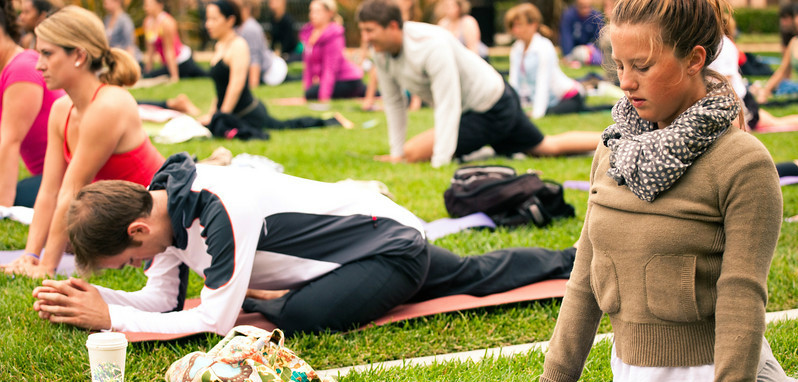According to Sport England’s most recent Active People Survey, athletics – including running – has recorded the biggest rise in participation of any sport in England in recent years. Even without the survey results, the growing popularity of running is clear to see every day on our streets. More and more people are lacing up their trainers and getting out there.
This increase in popularity has been matched by a growing interest in races. This year, the London Marathon boasted 38,000 runners – almost five times the 7,747 who ran the first race in 1981. Even on a local level, we’ve seen our Big Stockport Run – a 10k race – going from strength to strength in the last five years.
Getting ready for a race isn’t all about the training runs though. Running is fantastic for your health, but it can also take a toll on your body and it’s important to accompany your running with other exercises which help to strengthen your muscles and improve your stamina.
So what other exercises should you be doing? Here are my three top tips:
Take up yoga
Adding yoga to your training regime can deliver a number of benefits. For starters, it’s brilliant for teaching you to control your breathing. This is great for your running, as having good breath control can improve your pace, help to relax you during a run and even reduce the risk of injury.
Which leads me on to the other big reason to take up yoga – avoiding injuries. The strength and flexibility you develop on the mat – in the core, quads, hamstrings, and hip flexors – can help you run more efficiently and stay injury-free. That said, don’t try to do too much too quickly – if you’re currently in the middle of a heavy training month, use gentle yoga sessions to relax rather than push yourself further. You can always up the effort when your training routine is less intense.
Build strength training into your regime
Many top athletes include strength training as part of their regime. Working weak muscles and correcting imbalances can help to reduce risk of injury. Another, less well-known benefit, is that strength training boosts your ‘running economy’ – in other words, it helps your body keep the same pace while using less oxygen.
As with yoga, the key with strength training is to get the balance right as it places competing demands on your body when added to regular running. It’s a good idea to have a one-off session with a personal trainer to build a personalised plan which allows you to focus on your own problem areas and ensure you perfect your weight lifting technique. Remember that using a bad technique when lifting weights can do more harm than good.
Try cross-training
By cross-training, I mean including other forms of cardio in your training regime. For example, cycling, swimming or an elliptical trainer. One of the key benefits of cross-training is that it can help to strengthen neglected muscle groups – so again, it’s a way of preventing injury.
For new runners in particular, cross-training can help to build the level of muscle strength, fitness and endurance needed to run without injury. Your ankles, knees, and lower back aren’t used to the repetitive impact of running, so you can use walking, elliptical machines, and other low-impact conditioning tools to improve endurance without beating up your most vulnerable joints, muscles, and connective tissues.
Cross-training is also great for injury rehabilitation. It’s not always possible to start running again straight after an injury, particularly as it’s such a high-impact sport. Exercises like water running, elliptical training and cycling are good choices for maintaining running-specific fitness levels.
Importantly, for anyone of a competitive nature, cross-training can also increase your running fitness. It can give you improved strength and power and allow you to train harder with less risk of injury or fatigue.
Whether you decide on cross-training, yoga, strength training or all three, the key is to build up slowly and perfect your technique. That way you’ll soon be on the road to a new personal best – whatever level you might be.

